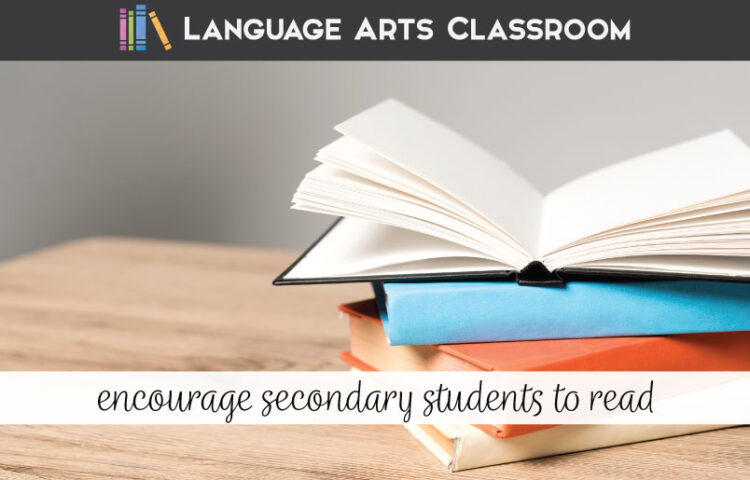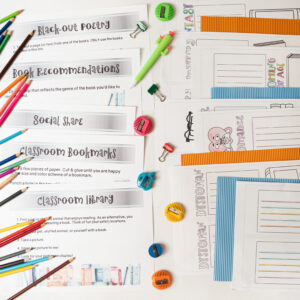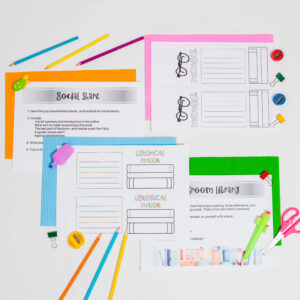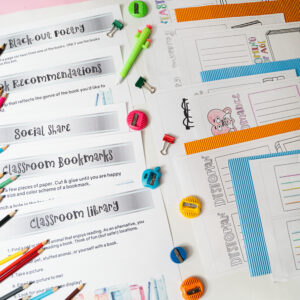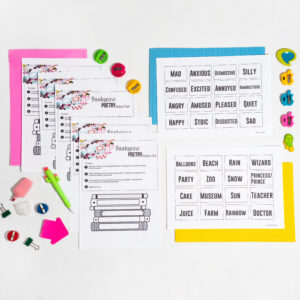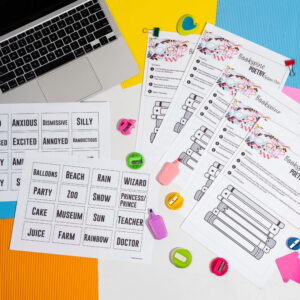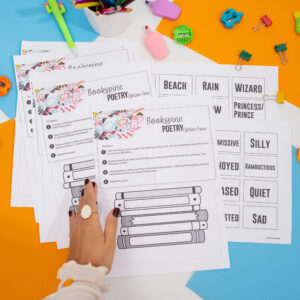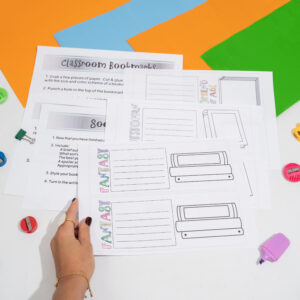Are you trying to encourage teenagers to read? I am too. As a high school English teacher, here is how I get high school students to read.
Part of my job as a high school English teacher is talking to young adults about reading. Sure, we work on literary standards and write analytical essays. Overall, concerning reading and building reading stamina, I stress the importance of reading and the role stories play in our culture.
Older classes don’t want forced conversations or inauthentic activities with books. Over the years, I have struggled to convey the importance of reading without preaching, to discuss literature in a way the showcases the fun of reading, and to get students to attempt new stories, specifically nonfiction.
Eventually, through experimentation, the fun of reading became a central focus in my approach to encourage teenagers to read. Overall, reading became enjoyable and relatable, rather than a chore or an academic task.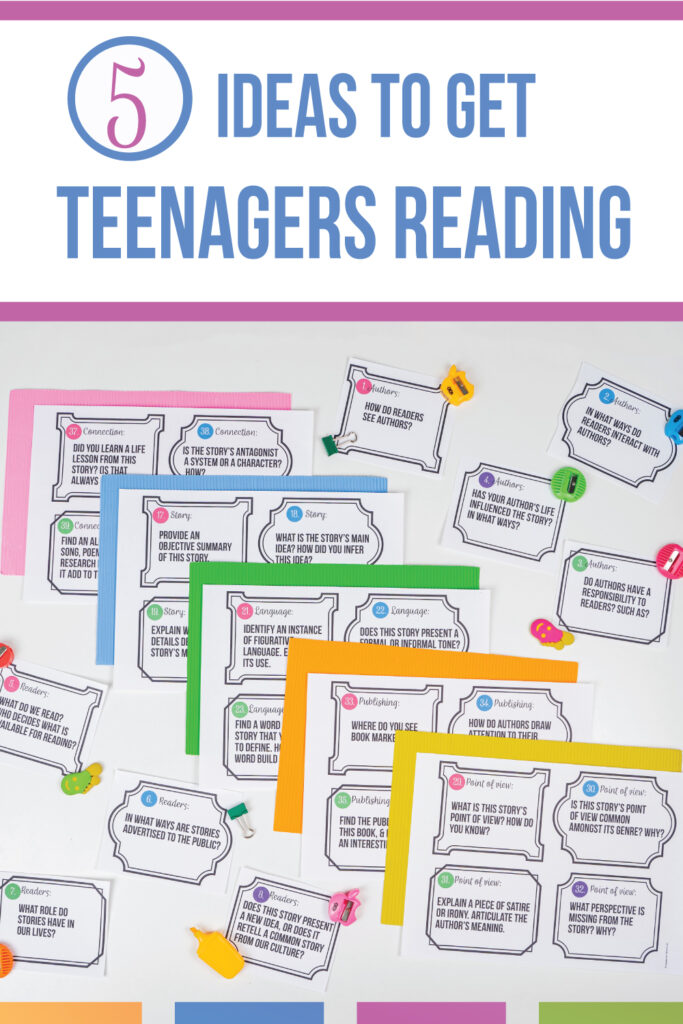
One effective strategy I use is to introduce diverse genres and topics that resonate with teenagers. By selecting books that tackle contemporary issues, such as mental health, social justice, or identity, I grab their attention and show them that literature can address their own experiences and concerns.
Furthermore, I promote student choice by creating a classroom library filled with an array of options. This empowers teenagers to select books based on their personal interests.
Finally, my fun classroom library bundle provides the right amount of structure with freedom for exploration. Classes engage with books in a low-pressure way with fun activities.
The teenage years are actually the perfect time to practice experimenting with books and engaging with school librarians. In reflecting on my successes and failures, here are five ideas to encourage teenagers to read.
Provide choice in discussions.
I do NOT want to dissect every part of a story when I gather with friends. If a book has book club questions in the back of the book, we do not cover all of them. We cover what interests us. Our discussions unfold naturally, and teenage readers should experience those natural discussions too.
This idea resonates with me when discussing stories with students. Instead of providing a list of questions and mandate they answer them all, I let students choose from literature cards with pressing questions. Those questions are intended for modern books (which explains their label of “postmodernism”) so that students can see identities, realities, and psychological situations from their modern lives in them—and then relate to the literature.
With older students, English teachers want students prepped for reading outside the classroom. Sure, some students will read in college, but young adults should experience the authenticity of discussing books in regards to what matters to them. These cards allow students to discover how they relate to literature and then encourage deep discussions with peers.
Recommend books—teacher and librarian.
Not only do I recommend books based on other books, but I also recommend books based on students’ interests. Additionally, I know that not every school has a librarian but if you do, bring in that person so that students practice interacting with library workers. Together, two adults brainstorm with young readers to find appropriate stories for interests and needs and collaboratively, get high school students to read.
Consider this: If we want to encourage teenagers to read, we should provide ideas that interest students. As relationships with students build, book recommendations come easier to me. Then, as I recommend books, relationships with students grow. Sometimes during a discussion, I will pull up Amazon or another bookstore and show books connected to our current classroom discussion. In that way, the integration of reading becomes natural.
Several methods for recommending books will work, but my most common opening is to inquire about genres. If a student doesn’t have a favorite genre, I ask about beloved movies or shows. For instance if a student enjoys dystopian or science fiction stories, I’ll start with a common winner. Depending on the age, I might recommend The Hunger Games or The Fifth Wave.
When deciding between two stories, I ask the student to read the first few pages of each book and to choose the one to which they relate best.
Another bonus? By recommending books to students, they will start recommending books to you. . .
Ask students what to read.
Quite honestly, I cannot keep up with young adult recommendations without lots of help. Young adult literature has grown—which is amazing—but keeping up with publications is a full-time job! Therefore, the help also comes from my students. As I recommend literature to them, they reciprocate.
Keep sheets readily available for students to grab and jot down ideas. Whenever students share their reading, I ask them to grab a sheet and recommend a book for me. You can grab the free download. Sometimes, I dedicate an entire bulletin board to student recommendations. Together, we add recommendations to the bulletin board and build our literacy together.
An extension activity is to ask classmates to share with each other after they share with you. A two-minute turn and talk will work. The smallest actions, that take zero or little planning, can get high school students to read.
Give journaling options.
Similar to my discussion questions from #1, I provide journaling options for readers. The options are more simplistic than the cards (pictured above) and allow students to freedom in their approaches.
Simple journaling questions could be:
- Who is your favorite character and why?
- Where is the storying taking place? Is the setting significant?
- What would you ask the author about writing this book?
- With graphic novels: What do the font choices and color palettes convey?
Journaling questions allow teenagers to explore the literature how they would like. With options for interaction, high school learners read with meaning. As we get high school students to read, we can’t kill the fun of exploring a story.
Put the books in their hands.
Sounds like a no-brainer, right? Well, with my classroom library, I had shelves of pretty books and not much interaction. My book display was beautiful, almost like a book store.
The entire situation was backward. No matter how we get young people looking at the books, they are looking at the books.
My favorite (and probably easiest) method for boosting engagement is with book spine poetry. If you are not familiar with book spine poetry, the process is simple. Students build a poem by stacking books, and the formation of titles on the spine becomes the poem. Ask students to take a picture or to draw the poem.
We want to avoid readers stacking books, taking a picture, and calling it a day, so I built activities to engage students in the process. My favorite involves tone. (You can see the tone cards in the above picture.) Students draw from tone cards and then discover books that will build a poem to match their tone. Their creations require sorting through stacks (yay!), so they are utilizing their time in the classroom library.
As a bonus, keep the images of book spine poetry to use as recommendations for future classes. A spooky tone? Those book spine poems are displayed during October. An excited tone? May, toward the end of the school year.
Are you sure I can encourage teenagers to read?
Yes. Sometimes, young learners seem disinterested or unsure of where they belong in a school. Many belong in a classroom library or the school library. Put books into their hands, encourage experimentation (with a touch of structure!), and keep the discussions going.
Encouraging teenagers to read can indeed be a no-brainer, but it all starts with creating an interactive and engaging environment. When I first introduced a classroom library, I realized that simply having pretty books on the shelves wasn’t enough to capture their attention.
If you are not seeing engagement, here is my final pep talk. . .
Pep talk to get high school students to read:
If you are looking ways to encourage teenagers to read, experiment and play with the books. You might mess up, and your classes might not fall in love with reading immediately. But, some will. And, others will read something.
Put books in their hands, and ask them to do something. Ask young readers to find an interesting character name, a unique piece of dialogue, or an intriguing author bio. They will be handling books, looking, playing with them.
Your first attempts to find the right book, to encourage reading skills, and to create reading habits might now work at first, but with a few switches and reflections, you will have students reading and experimenting with books. You can get high school students to read.

